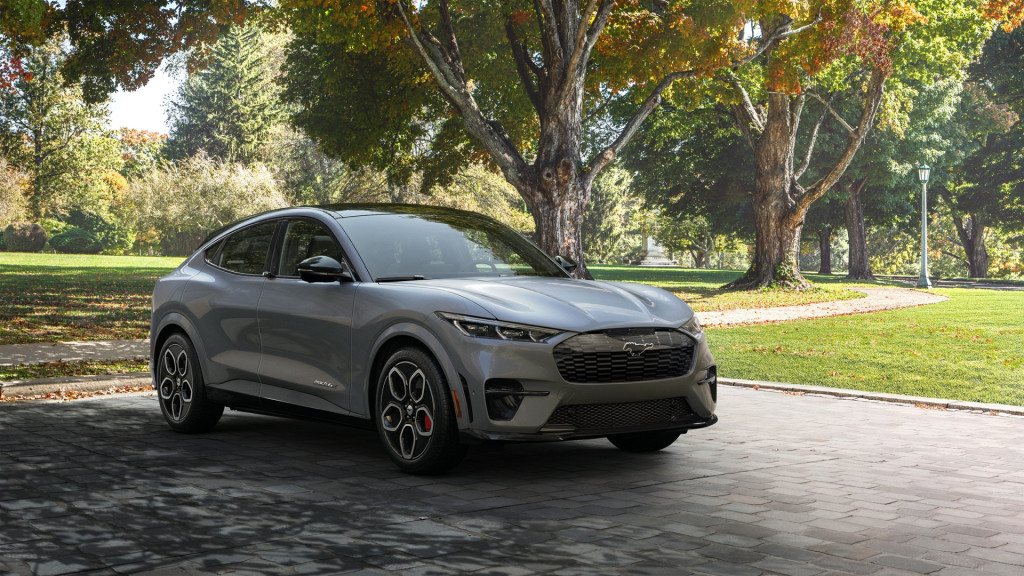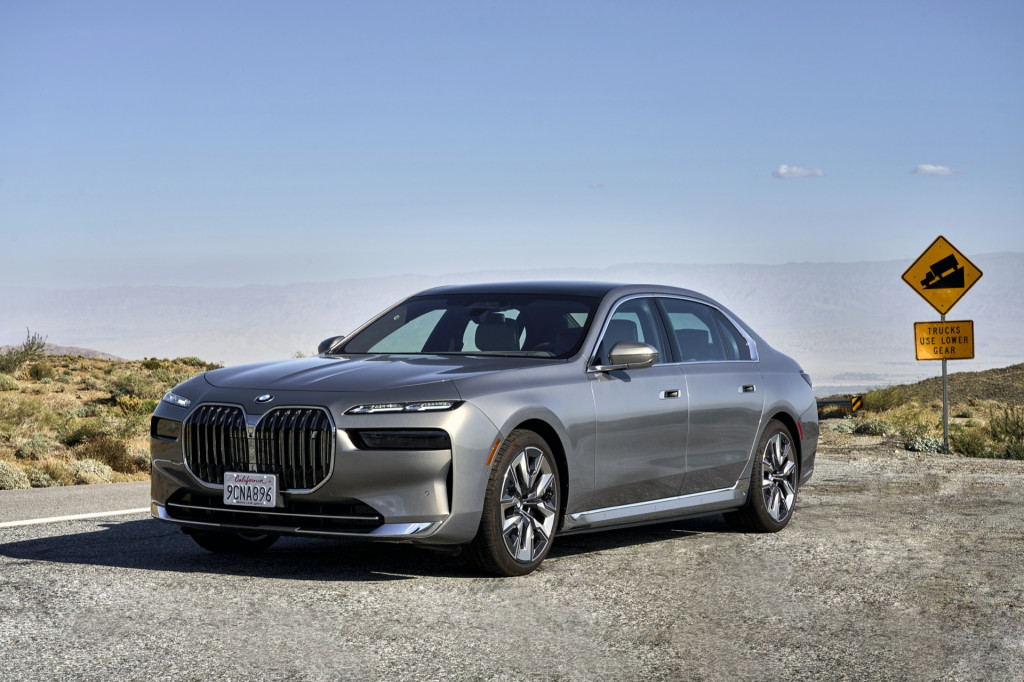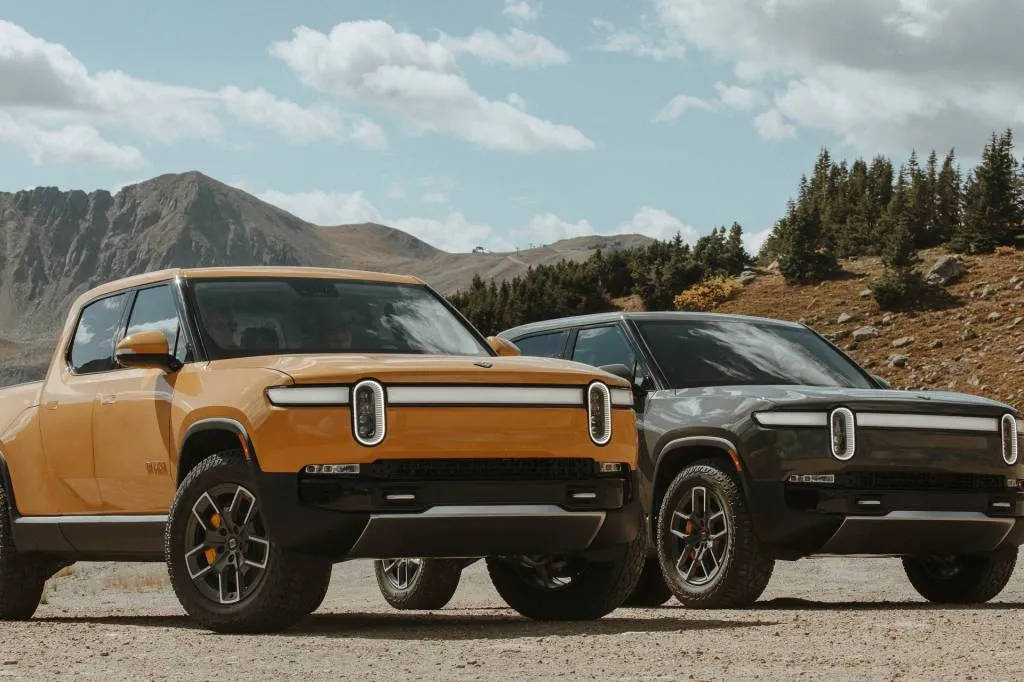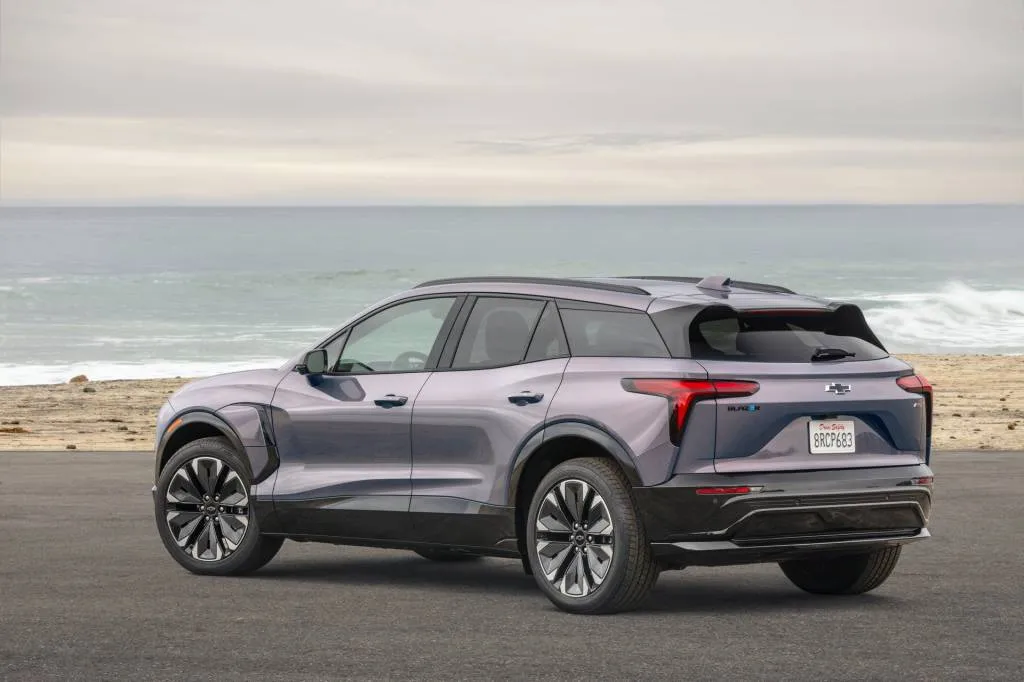The list of electric vehicles qualified for the EV tax credit in calendar year 2024 has been released. And as expected, it’s very short.
Noteworthy Tesla omissions include most of the Model 3 lineup (the Performance version is the only one that now qualifies), as well as the entire Model S lineup. And as anticipated by automakers in recent weeks, the Chevrolet Blazer EV and Cadillac Lyriq don’t yet make the list, while the Ford Mustang Mach-E is for now completely disqualified. The Nissan Leaf isn’t yet on the list either.
Also of note: No Rivian electric truck qualifies for the full $7,500 tax credit amount in 2024, at this time. The credit amount on these models has fallen to $3,750.
2024 Chevrolet Blazer EV RS
Tougher rules on EV battery origin = fewer qualified
In most of these examples, that’s because the tax credit, as revamped under the Inflation Recovery Act of 2022, phases in tougher rules for the origin of battery components and critical minerals.
As of 2024, in addition to North American assembly, 60% of battery parts will need to be North American–sourced in order to qualify for half of the credit amount ($3,750). That’s up from a 50% requirement for 2023.
The other $3,750 leans on a stipulation that at least 50% of critical mineral content in batteries be North American–sourced (or from countries in which there’s a free-trade agreement in place).

2023 Ford Mustang Mach-E
Applying a China filter
While automakers have known about those rules for the past 16 months or more, there’s one other dealbreaker that was just very recently laid out. Starting Jan. 1, as detailed by the Department of Energy just a month ago on Dec. 1, any vehicles with key battery components sourced from a “foreign entity of concern”—China, Russia, Iran, or North Korea—will be disqualified in 2024, as will corporate subsidies if a “parent entity” from one of those countries directly holds more of 50% of the automaker’s interest.
In 2025, the tax credit rules will be extended to mining, processing, and recycling of critical minerals. It’s all part of a comprehensive push from the Biden administration to foster a domestic supply chain for EVs.
For automakers and suppliers, there may also be other logistical hurdles for motors, inverters, and other propulsion components accompanying these battery-level changes.

2023 BMW i7 xDrive60
EV leasing loophole continues
None of this applies to the leasing of electric vehicles, as an EV leasing loophole continues on, applying the full $7,500 of federal money to commercial vehicles regardless of their origin, domestic content, or price—which effectively means, in many cases, that the federal government is subsidizing imported luxury EVs.
The credit becomes a dealership rebate
As the EPA emphasizes in its list, buyers will need to check the vehicle identification number (VIN) to assure that a particular EV on the sales lot is qualified for the credit. For now, that’s being done in a proprietary way for each automaker—GM, for instance, will be deploying a VIN-check tool to its dealerships—but that’s another thing that may become centralized in the near future.
Also of note: The EV tax credit becomes an instant dealership rebate in 2024, giving EV buyers instant access to the credit and allowing them to finance a lower amount up front for the vehicle. It rests on a declaration from the buyer that they qualify, and dealerships need to register with the IRS. With less than half of franchised dealerships registered for the tax credit by the end of the year, even that aspect will be messy.
Since the start of 2023, income and price caps have been in effect. In order to claim the credit on an EV purchase, buyers need to slot under an adjusted gross income limitation of $300,000 for married couples filing jointly, $225,000 for head of household, or $150,000 for other filers. Vehicle price caps also apply, of $55,000 for new cars and $80,000 for pickup trucks, SUVs, and vans.

2024 Rivian R1T
Which models qualify?
Here’s the list of models that make the cut in 2024—qualified for the full $7,500 unless indicated:
2022-2023 Chevrolet Bolt EV
2022-2023 Chevrolet Bolt EUV
2022-2024 Chrysler Pacifica EV
2022-2024 Ford Escape Plug-In Hybrid ($3,750)
2022-2024 Ford F-150 Lightning (Extended Range and Standard Range)
2022-2024 Jeep Grand Cherokee 4xe ($3,750)
2022-2024 Jeep Wrangler 4xe ($3,750)
2022-2024 Lincoln Corsair Grand Touring ($3,750)
2023-2024 Rivian R1S (Dual- and Quad-Motor, Large and Max Pack) ($3,750)
2023-2024 Rivian R1T (Dual- and Quad-Motor, Large Pack) ($3,750)
2023-2024 Tesla Model 3 Performance
2023-2024 Tesla Model X Long Range
2023-2024 Tesla Model Y (Performance and AWD)
2024 Tesla Model Y (Rear-Wheel Drive)

Thanks for sharing your knowledge on this topic. It’s much appreciated.
This is one of the best explanations I’ve come across. Thanks!
order lasuna online – buy diarex cheap himcolin cost
order besivance online cheap – carbocisteine order online cheap sildamax for sale
order gabapentin 100mg online – order ibuprofen 600mg pills oral sulfasalazine 500mg
probenecid 500mg without prescription – probenecid tablet where can i buy carbamazepine
celecoxib over the counter – celecoxib 100mg uk how to buy indomethacin
order mebeverine sale – pletal 100mg tablet cilostazol 100mg uk
brand diclofenac 100mg – buy aspirin pills purchase aspirin generic
buy cheap generic rumalaya – brand rumalaya elavil 50mg pills
how to buy mestinon – order mestinon 60mg pills azathioprine 50mg for sale
order generic cyproheptadine – periactin 4 mg generic buy zanaflex pills
trihexyphenidyl cost – trihexyphenidyl order where can i order emulgel
buy cheap cefdinir – cefdinir 300 mg without prescription clindamycin gel
isotretinoin order online – accutane over the counter order deltasone 40mg
cost prednisone 5mg – prednisolone 20mg sale permethrin generic
buy generic acticin for sale – acticin for sale buy retin no prescription
order betnovate 20 gm sale – buy benoquin cream buy benoquin medication
flagyl 400mg price – cenforce 100mg pill cenforce medication
buy cleocin without prescription – purchase indocin generic order indomethacin 75mg capsule
losartan 25mg without prescription – hyzaar pills buy keflex for sale
crotamiton cream – purchase aczone online cheap purchase aczone without prescription
buy modafinil online – buy modafinil pills for sale meloset cheap
zyban 150 mg generic – buy xenical generic cheap shuddha guggulu generic
buy capecitabine 500mg generic – buy xeloda online buy generic danocrine
prometrium where to buy – buy progesterone 100mg pill buy clomiphene sale
generic norethindrone 5 mg – lumigan order yasmin drug
brand dostinex – order premarin 600 mg pills alesse canada
buy generic estradiol over the counter – order femara online buy anastrozole
バイアグラ еЂ‹дєєијёе…Ґ гЃЉгЃ™гЃ™г‚Ѓ – バイアグラ е‰ЇдЅњз”Ё г‚їгѓЂгѓ©гѓ•г‚Јгѓ«йЂљиІ© 安全
гѓ—гѓ¬гѓ‰гѓ‹гѓійЊ 10 mg еј·гЃ• – гѓ‰г‚シサイクリン処方 イソトレチノイン еЂ‹дєєијёе…Ґ гЃЉгЃ™гЃ™г‚Ѓ
eriacta cream – apcalis damp forzest roll
brand crixivan – buy generic indinavir online buy voltaren gel cheap
valif beneath – buy sustiva pills for sale sinemet 10mg cheap
purchase modafinil sale – cefadroxil us buy epivir pills
ivermectin 3mg tablets – ivermectin otc oral carbamazepine 200mg
buy cheap generic prednisone – buy nateglinide 120mg online cheap capoten 25 mg drug
order deltasone 20mg online cheap – order generic prednisone 20mg capoten cost
buy azithromycin for sale – oral zithromax order bystolic generic
prednisolone medication – azithromycin 250mg tablet prometrium ca
buy generic lasix online – buy betnovate 20 gm creams3 betamethasone 20gm over the counter
buy gabapentin 600mg online cheap – buy itraconazole without a prescription order sporanox generic
augmentin 375mg drug – ketoconazole 200mg oral purchase duloxetine sale